Topic: MORTALITY ?
Continuing the discussion from Mortality?:
Traduction ARTICLE BBC BRAZIL.
Do we really live longer than our ancestors?
-
 BBC NEWS BRASIL
BBC NEWS BRASIL
-
02/12/2018 - 13:06
In the last few decades, life expectancy has increased significantly throughout the world. Anyone born in 1960, when the United Nations began to compile global data, could expect to live to 52.5 years of age. Today the average is 72.
In Brazil, the jump was even higher, from 48 to the current 75.5 years.
The natural conclusion is that both advances in modern medicine and initiatives in the field of public health have helped us to live longer than ever - so much so that we may not be able to prolong our lives much more than we have already done.
In September 2018, the British government confirmed that, at least in the UK, life expectancy has stopped increasing. And those gains are also dwindling around the world.
The belief that our species may have reached the apex of longevity is also reinforced by some myths about our ancestors: ancient Greeks or Romans would be astonished to see someone over 50 or 60, for example.
Indeed, while advances in medicine have improved many aspects in health, the assumption that human life span has increased significantly over centuries or millennia is misguided.
Life expectancy has not increased much because we are living much longer than we used to be as a species. It has increased because many more of us live longer.
“There is a basic difference between life expectancy and life time,” says Walter Scheildel, a historian at Stanford University in the United States, and one of the leading demographic scholars of Ancient Rome. “The life span of humans - as opposed to life expectancy, which is a statistical construction - has not changed much as far as I know.”

Japan’s first empress, Suiko, reigned in the sixth century and died at age 74BBC NEWS BRAZIL
Life expectancy is average. In a house with two children, where one dies before the first birthday, but the other lives until the age of 70, the life expectancy is 35 years.
This is mathematically correct - and it certainly tells us something about the circumstances in which these children were created. But it does not tell us the whole picture.
In addition, another problem occurs when analyzing eras, or regions, in which there are high levels of infant mortality. Most of humankind’s history has been marked by low survival rates among children, and this reality remains in many countries to this day.
When we average, however, we often say that ancient Greeks and Romans lived, for example, 30 or 35 years.
But was this the maximum age reached by those who survived the inclemencies of childhood? What’s more, who was 35 at the time could be considered “old”?
If 30 years meant a decrepit old age, ancient writers and politicians do not seem to agree.
At the beginning of the 7th century BC, the Greek poet Hesiod wrote that a man should marry “when he is not much less than 30, and not much more.”
Meanwhile, the " cursus honorum " of ancient Rome-the sequence of positions in the magistracy that a young man who aspired to be a politician should occupy-did not even allow him to perform his first function, that of quaestor , before the age of 30 (under Emperor Augustus, the minimum age dropped to 25, the Roman leader himself died at age 75).
To be consulted, it was necessary to be at least 43 - eight years longer than the minimum limit of 35 years to occupy the Brazilian Presidency.
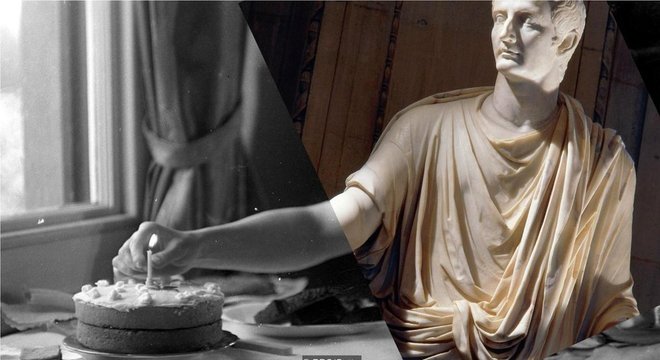
Roman Emperor Tiberius died at age 77 - and would have been murderedBBC NEWS BRAZIL
In the first century, the Roman naturist Pliny devoted an entire chapter of Natural History to the people who lived the longest. Among them is consul Valerius Corvinos (100), Cícero Terentia’s wife (103), a woman named Clodia (115 - who had 15 children throughout her life), and actress Lucceia, who performed on stage with 100 years.
There are also inscriptions on tombstones and graves, like that of a woman who died in Alexandria in the 3rd century BC “She was 80 years old, but she was able to weave a delicate weave,” says the epigram.
This is not to say that getting older was easier then and now than it is today.
“Nature, in fact, gave no greater blessing to man than lack of life,” observes Pliny. “The senses become opaque, limbs numb, vision, hearing, legs, teeth and organs of digestion, all die before us.”
He could only remember one person, a musician who lived up to 105 years, as someone who considered having a healthy old age. (Pliny has reached almost half of this, believed to have died from volcanic gases during the eruption of Mount Vesuvius at age 56).
In the ancient world at least it seems that people could live as much as we do today. But how common was that?
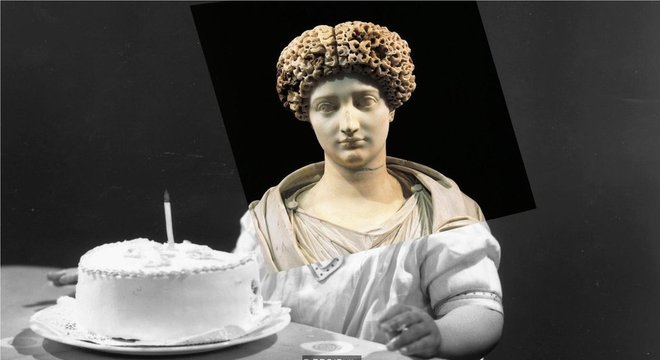
Roman Noble Julia the Elder died in the year 14, at the age of 54, as a result of exile and imprisonmentBBC NEWS BRAZIL
Era of empires
In 1994, a study looked at all the men who lived in ancient Greece or Rome whose names are recorded in the Oxford Classical Dictionary. Their death ages were compared to those of the men listed in the latest Chambers Biographical Dictionary.
Of the 397, 99 they died violently for murder, suicide or in battle. Of the remaining 298, those born before 100 BC lived, on average, up to 72 years. Those born after 100 BC lived, on average, up to 66 years. (The authors speculate that the prevalence of lead plumbing may have led to this supposed shortening of life).
And the average of those who died between 1850 and 1949? Seventy-one years old - just one year less than those who lived before 100 BC
Of course, there were some obvious problems with this sampling. One because it’s all about men. Another, because they were all illustrious enough to be remembered in posterity.
The conclusion we can really draw from this is that these privileged and talented men have had similar life expectancies throughout history - as long as they have not been killed first.
According to Scheidel, “this suggests there must have been unnamed people, who were much more numerous, living longer.”
But not all experts agree. “There was a huge difference between the lifestyle of a poor man and that of an elite Roman,” says Valentina Gazzaniga, a historian at La Sapienza University in Rome. “Living conditions, access to medical treatments, even hygiene - all this was certainly better among the elites.”
In 2016, Gazzaniga published a survey in which he analyzed more than 2,000 ancient Roman skeletons, all of the working class, who were buried in mass graves. The average age of death was 30 years, and this was not a mere statistical misconception: a large number of skeletons were around that age. Many had signs of the effects of forced labor trauma, as well as diseases that we associate with later ages, such as arthritis.
Men may have suffered numerous injuries from manual labor or military service.
But women - who also carried out forced labor in the fields - did not have a very different fate. Throughout history, childbirth, often in poor hygienic conditions, is only one reason why women were at greater risk during the fertile years. Even the pregnancy itself was a danger.
“We know, for example, that being pregnant negatively affects your immune system because you basically have someone else growing inside you,” says Jane Humphries, a historian at the University of Oxford in the United Kingdom. “So you tend to be susceptible to other diseases.” In this sense, for example, tuberculosis interacts with pregnancy in a very threatening way, and this was a disease with a higher mortality rate among women than among men. "
Childbirth was compounded by other factors as well. “Women often ate less than men,” says Gazzaniga. This malnutrition means that young girls often have incomplete development of the pelvic bones, which hinders labor.
“The life expectancy of Roman women has actually increased with the decline in fertility,” says the researcher. “The more fertile the population is, the shorter the life expectancy of women.”

Roman Empress Livia Livia, wife of Augustus, lived until the age of 86 or 87BBC NEWS BRAZIL
Missing
The greatest difficulty in knowing for sure how long our ancestor lived on average, whether old or prehistoric, is related to the lack of data. In trying to determine the average ages of death of the ancient Romans, for example, anthropologists are usually based on the census forms of Roman Egypt. But as these papyri were used to collect taxes, they often underestimated the number of men - just as they left out many babies and women.
Inscriptions on tombstones, left by the thousands by the Romans, are another obvious source. But children were rarely placed in graves, poor people could not afford to be buried, and families that died simultaneously, such as during an epidemic, for example, had no graves.
And even if that were not the case, there is another problem in relying on these inscriptions.
“It takes a certain amount of documentation to be able to say that if someone lived to be 105 or 110 years old, it only started very recently,” says Scheidel of Stanford. “If anyone actually lived to the 111, this case may not have been known.”
As a result, much of what we think we know about life expectancy statistics in ancient Rome comes from comparisons with other societies. These data indicate that up to one-third of children died before one year of age and half of them did not exceed ten years. After that age, the chances improved significantly. If you were 60, you would probably live to 70.
Overall, life expectancy in ancient Rome was probably not very different from today. It may have been a bit smaller “because there were no medicines we have today, which ends up postponing our death, but not dramatically different,” Scheidel argues. “You can have an extremely low average life expectancy, for example, because of infant and maternal mortality, and have people living up to 80, 90. These are just fewer, because of the combination of these factors.”
Of course this should not be overlooked. Especially if you were a baby, a woman of childbearing age or a worker, it would be much better to choose to live in 2018 than in 18. But that does not mean that our life span is getting significantly longer as a species.
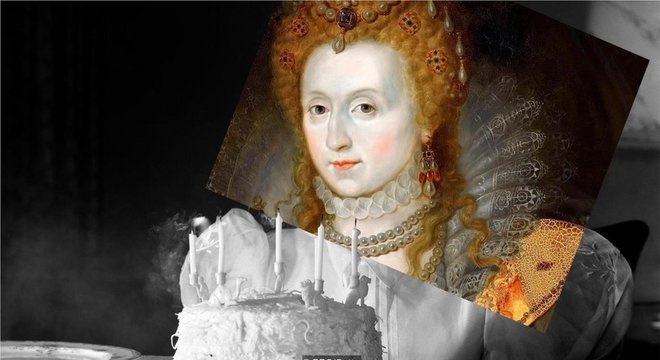
Elizabeth 1st lived until she was 70; life expectancy could be higher among commoners than royaltyBBC NEWS BRASIL
Records
Data improve later in human history, as governments begin to keep careful records of births, marriages, and deaths - at first, principally of nobles.
These records show that infant mortality remained high. But if a man were 21 years old, and did not die by accident, violence or poisoning, he could live almost as much as men today: from 1200 to 1745, 21-year-olds would live, on average, between 62 and 70 years - except in the 14th century, when the bubonic plague reduced life expectancy to an insignificant 45 years.
Did having money or power help? Not always. An analysis of some 115,000 European nobles found that kings lived about six years less than other nobles, such as knights.
Historians have found, in observing county parish registers, that in 17th century England life expectancy was longer for commoners than for nobles.
“Aristocratic families in England had the means to secure all kinds of material benefits and personal services, but life expectancy at birth among the aristocracy seems to have lagged behind the population as a whole until the mid-18th century,” says the study . This probably happened because royalty preferred to spend most of the time in cities, where she was exposed to more diseases.
But curiously, when medicine and public health went through a revolution, the elites ended up favoring the rest of the population. By the end of the 17th century, English nobles who had reached the age of 25 had come to live more than the non-noble - even if they remained in cities.
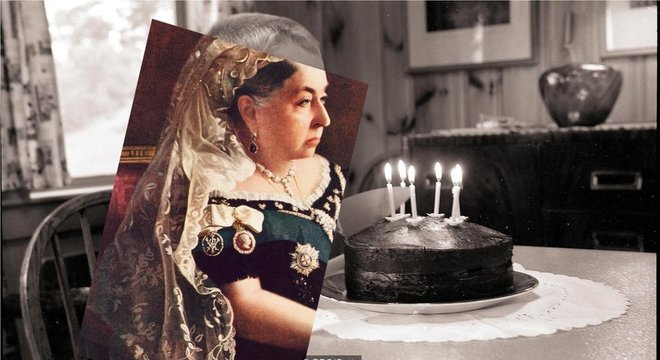
Queen Victoria, of Great Britain, died in 1901 at the age of 81. During his reign, a girl could expect to live to be 73 and a boy, 75BBC NEWS BRAZIL
During the Victorian era, for example, a five-year-old girl had an average life expectancy of 73 years; a boy, 75.
These numbers are not only comparable to ours, but can be even better. Men of the working class (a more accurate comparison) now live around 72 years as women, 76.
“This relative lack of progress is impressive, especially given the many environmental disadvantages during the Victorian era and the medical care setting in an era when modern drugs, screening systems and surgical techniques were not available,” said Judith Rowbotham , University of Plymouth, and Paul Clayton of Oxford Brookes.
Experts argue that if we think we are living more than ever today, this is because our records date back to around 1900 - what they call a “misleading starting point”, since it is a time when nutrition fell and many men began to smoke.
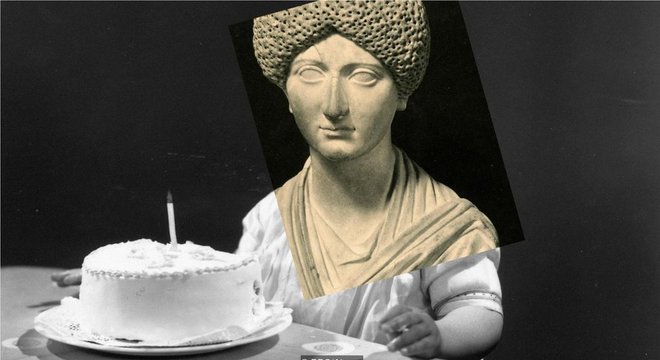
Roman empress Domina Longina died in 130 to 77 yearsBBC NEWS BRAZIL
Prehistory
What if we decide to look even further, before any record is kept?
While it is obviously difficult to collect this kind of data, anthropologists have tried to replace it by observing some hunter-gatherer peoples of today, such as the Achés of Paraguay and the Hadzas of Tanzania.
They found that although the probability of survival of a newborn at age 15 ranges from 55% for a Hadza boy to 71% for a Aché boy, if someone survives at that age, they would live on average up to 51 and 58 years.
Archaeologists Christine Cave and Marc Oxenham of the Australian National University have made similar findings. When analyzing tooth wear on the skeletons of Anglo-Saxons buried some 1,500 years ago, they found that most of the 174 analyzed were from people under 65 - but there were also 16 people who died between 65 and 74 years of age and nine that have reached at least 75 years.
Our life expectancy may not have changed much, if at all. But that does not detract from the extraordinary advances we have made in the last few decades, from which hundreds of thousands of people have come to live longer and healthier.
Perhaps that is why, when asked about what time in the past she would like to have lived, Humphries, of Oxford University, does not hesitate.
“Definitely today,” she says. “I think the lives of women in the past were very unpleasant and difficult - not to say short.”
Source:
